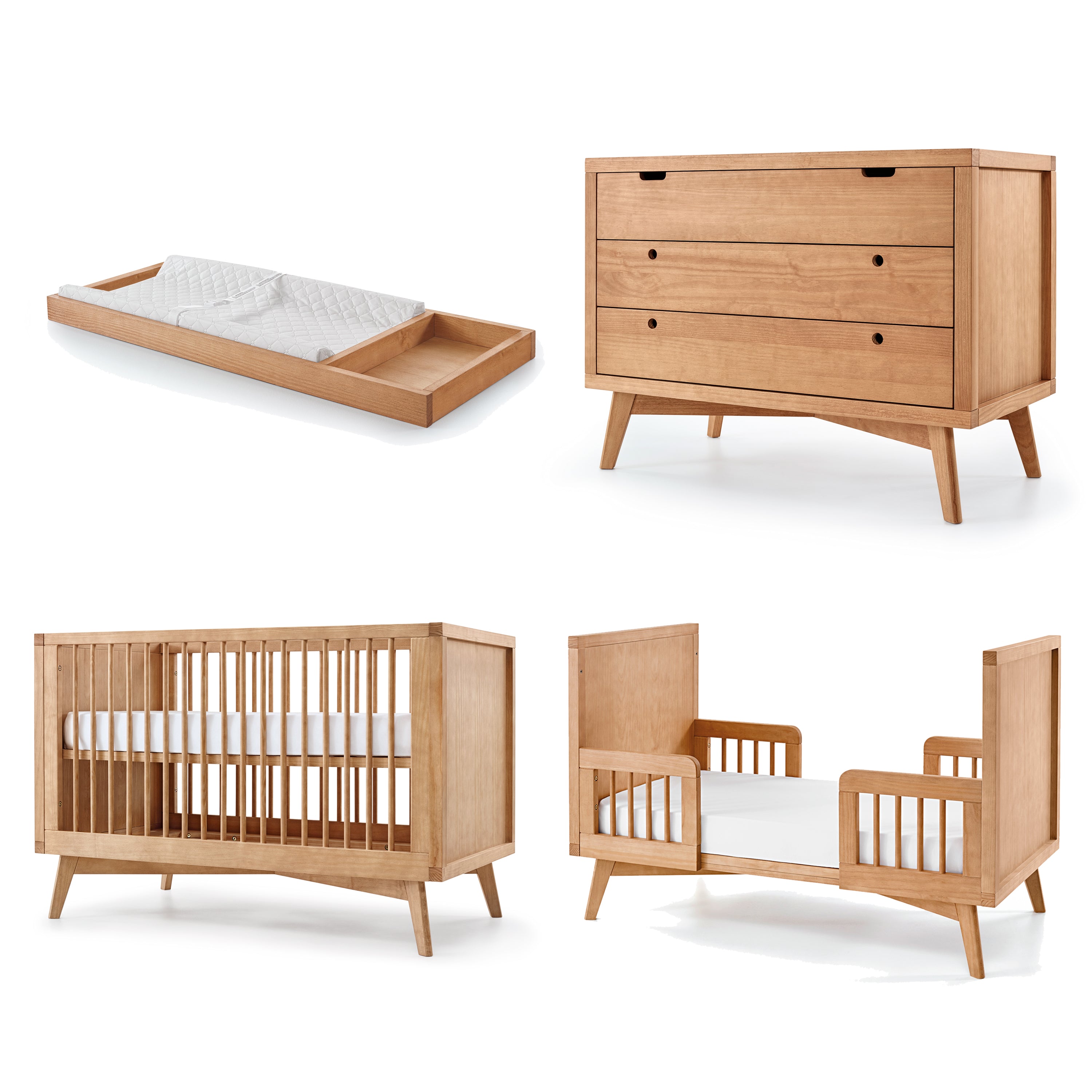The Role of Color Psychology in Nursery Furniture Design

As an expectant or new parent, you make millions of important decisions on behalf of your baby every day. Did you know the color of your little one’s nursery walls or furniture is one of those significant considerations? Color analysis studies, first conducted by advertising firms in the 1990s, revealed the important role color plays in our mood, behavior, and overall health. Explore the role of color psychology in nursery furniture design to see how different hues affect children’s development and behaviors, so you can choose the best for your baby.
Color Vision Development
Different colors can have unique effects on your child’s mind and body, so it’s important to think about the colors you incorporate in your nursery. Although babies do not fully recognize color until they’re at least five months old, your little one will spend many hours in their room as they grow and develop, so you want to make sure you choose the perfect pigment.
During the first few months of life, a baby’s brain reacts strongly to contrasting colors such as black, white, and gray. These colors help stimulate brain growth and visual development. At approximately three months old, a baby starts to see brighter, primary colors. The little one fully develops color vision by eight months old, allowing them to see the entire rainbow.
Warm Colors
Consider incorporating warm colors into the nursery’s design if you want to create a cozy nursery for your little one. Warm colors signal feelings of comfort and happiness, so touches of yellow, red, and orange can stimulate the mind and body. Being surrounded by bold shades can positively affect your child’s growth and development, but the stimulation can also be a challenge when it comes to bedtime.
As such, it’s best to use warm colors in moderation. Incorporating bright furniture or painting every wall a neon shade of yellow can prevent your child from feeling a sense of calm in their room. Instead, bring in warm hues with a small accent table or thoughtfully placed accessories. For example, you can add a splash of color by adding a red throw blanket or textured orange pillow to your corner glider or rocking chair.
Cool Colors
Cool colors have an overall calming effect on the body when it comes to the role of color psychology in nursery furniture design. Incorporating colors commonly found in nature, such as the light blue of the sky or ocean, can make your child’s nursery feel relaxed and peaceful. Since a feeling of relaxation often promotes sleep, it’s wise to use these hues throughout your little one’s bedroom.
Keep in mind that cool colors can feel a bit stark if you don’t pair them with warmer textures and fabrics. Thus, incorporate rich neutrals like wooden furniture or richly textured drapes if you choose to paint the nursery walls a pale blue.
At Simply Nursery, we offer beautifully designed baby nursery furniture to satisfy all your needs. We source our furniture from 100% renewable Brazilian pine wood forests, so you can achieve a cozy, natural feeling in your nursery, whether you choose to incorporate warm or cool colors.




No source? No name of the writer? No research, nothing?
Sincerely hope no one actually bothers to believe what this text is claiming, especially when the site offers the stuff it claims is good. If I look up ‘conflicting interests’ I might just find ‘Simple Nursery’ as a bloody example.
‘Color analysis studies, first conducted by advertising firms in the 1990s’ No link? No work quoted? Didn’t happen then.
If you want to convince the reader of something with science, then you’re gonna have to show your work.
YOU want the reader to be convinced, then YOU have to put the sources down so that readers can potentially check for themselves whether or not they agree.
Don’t get me wrong, most won’t. But I wanted to, and now I can’t. So I can’t help but be skeptical now.
I hope you still have the sources you vaguely alluded to, so you can still add them in. If you don’t, well. I won’t know, I won’t be coming back here either way.
Leave a comment